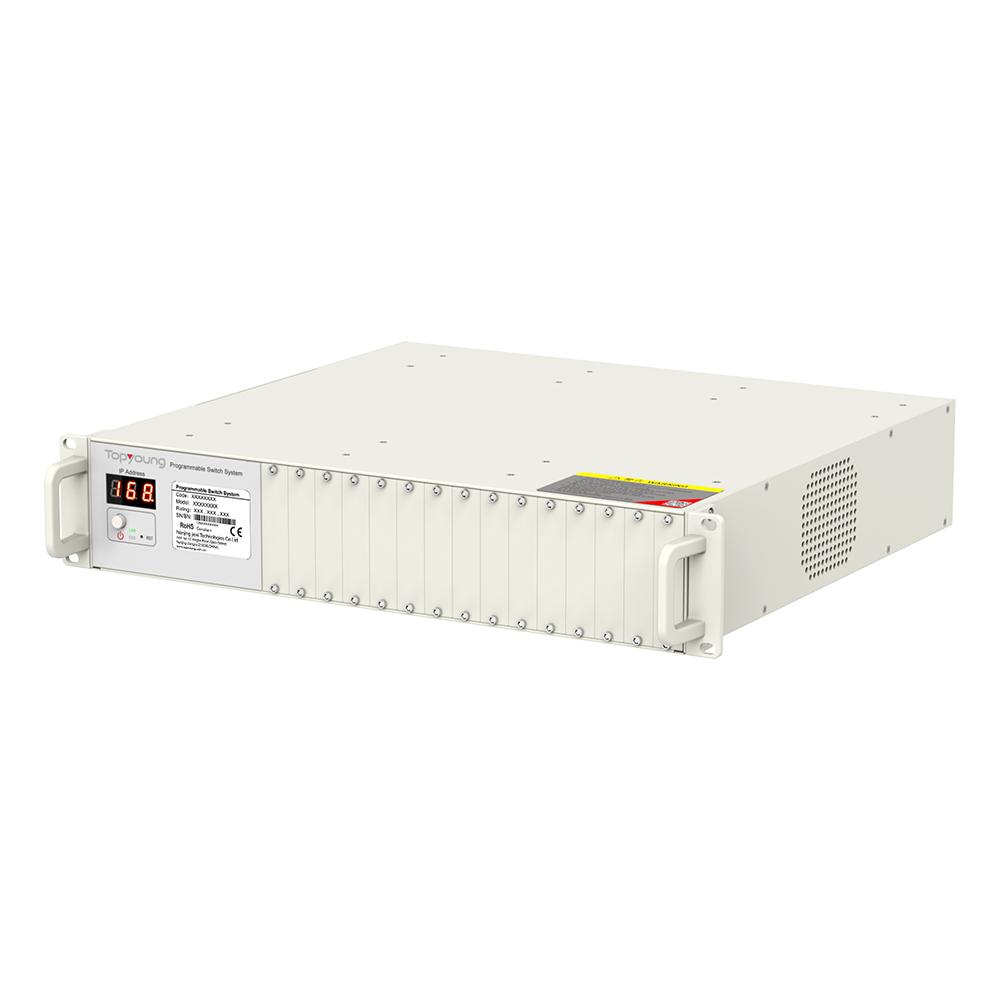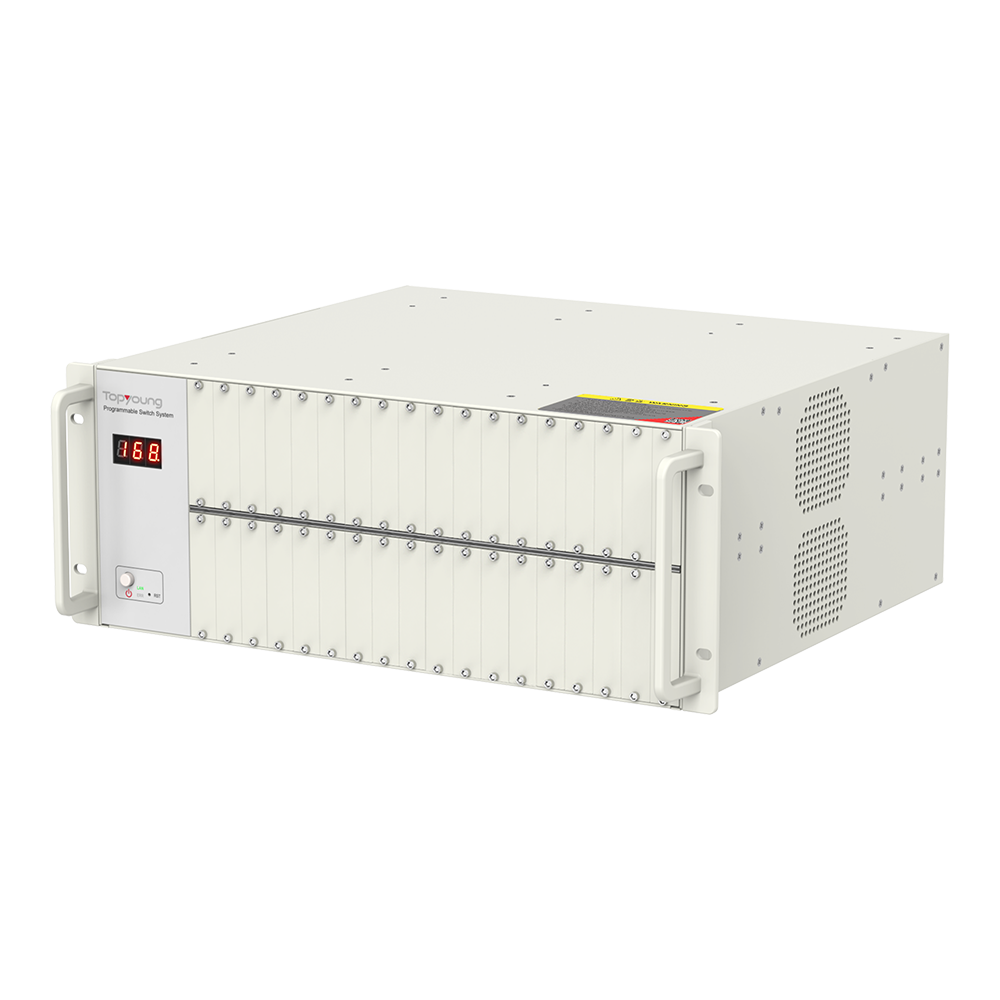Platform selection
| Model | Size |
Front panel (slots) |
Rear panel (slots) | product picture |
|---|
| T722C | 19", 2U | 15 | 15 |  |
T722D
| 19", 4U | 36 | 36 |  |
Pluggable RF module selection
| Model | Description | Freq (GHz) | Slot | IL (dB) | Switching time | RF power
(W) |
|---|
| PS2X-0.4G8.5-60S | Solid-sate switch,SPDT | 0.4~8.5 | 1 | 3.5 | 20us | 2W |
PS4X-0.4G8.5-60S
| Solid-sate switch,SP4T | 0.4~8.5 | 3 | 4.5 | 20us | 2W |
PS6X-0.4G8.5-60S | Solid-sate switch,SP6T | 0.4~8.5 | 3 | 4.5 | 20us | 2W |
| PS8X-0.4G8.5-60S | Solid-sate switch,SP8T | 0.4~8.5 | 4 | 4.5 | 20us | 2W |
RS2L-531S-R | Relay switch,SPDT | DC~18 | 1 | 0.4 | 10ms | 50W |
| RSHL-532S-R | Relay switch,DPDT | DC~18 | 2 | 0.5 | 15ms | 50W |
RS6L-532S-R | Relay switch,SP6T | DC~18 | 3 | 0.5 | 15ms | 50W |
RS8L-532S-R | Relay switch,SP8T | DC~18 | 4 | 0.5 | 15ms | 50W |
RS2L-731K-R | Relay switch,SPDT | DC~40 | 1 | 0.65 | 15ms | 5W
|
RSHL-731K-R | Relay switch,DPDT | DC~40 | 2 | 1.3 | 15ms | 5W |
RS6L-732K-R | Relay switch,SP6T | DC~40 | 3 | 0.7 | 15ms | 5W |
RS8L-732K-R | Relay switch,SP8T | DC~40 | 4 | 1.5 | 15ms | 5W |
RS2L-832U-R | Relay switch,SPDT | DC~50 | 1 | 1.3 | 15ms | 3W |
RS6L-832U-R | Relay switch,SP6T | DC~50 | 3 | 1.3 | 15ms | 3W |
SA-0.1G8.5-90-0.5S | Programmable attenuator, 0.1~8.5GHz | 0.1~8.5 | 1 | 12 | 20us | 1W |
SA-0.1G40-60-0.5S | Programmable attenuator, 0.1~40GHz | 0.1~40 | 1 | 14 | 20us | 0.2W |
Safety regulations and standards
| EU EMC | EMC 2014/30/EU, EN 61326-1:2013 |
| EU LVDS | Low Voltage Directive 2014/35/EU |
| EU LVDS | Safety EN 61010-1:2010, AMD1:2016 |
| EU RHOS | RoHS Directive 2015/863/EU |
| USA FCC | FCC CFR 47 PART 18:2021 FCC MP-5:1986 |